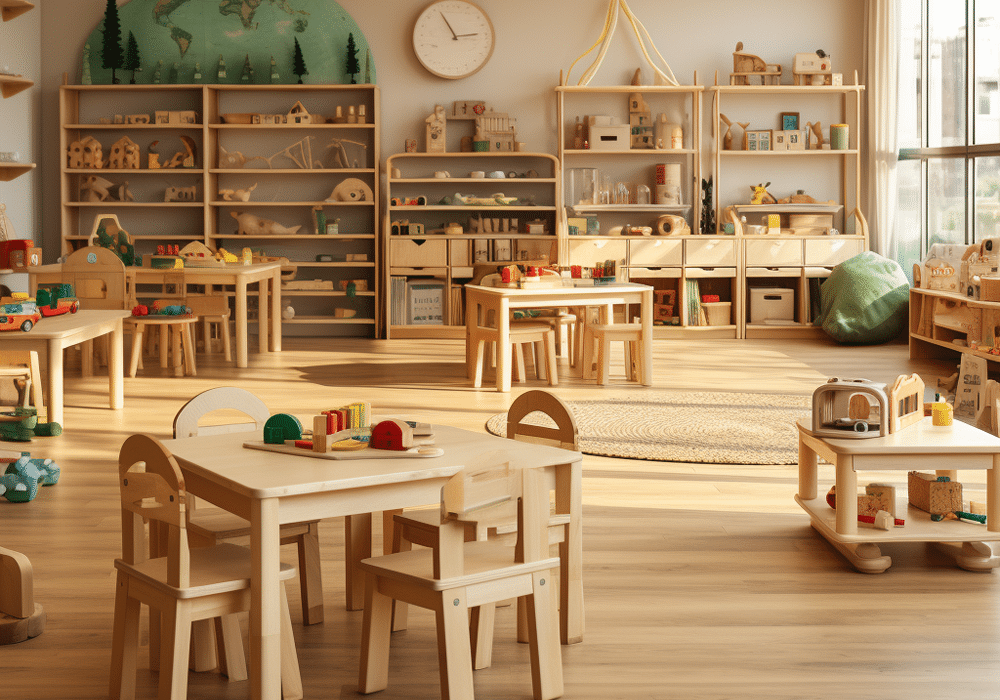Are you interested in creating a language-rich environment that fosters literacy development in young learners? In this article, we’ll delve into the world of Montessori furniture designed to nurture language and literacy skills, setting the stage for effective communication and a lifelong love of reading and writing.
Montessori Furniture for Language and Literacy Development serves as a cornerstone in creating an environment conducive to language acquisition and literacy skills. These purposefully designed pieces aid in building vocabulary, encouraging reading, and promoting writing skills.
Why is Montessori furniture crucial for language and literacy development?
Montessori education is renowned for its emphasis on hands-on learning and child-centered environments. Language and literacy development play a central role in this approach, and the right furniture can make all the difference. Montessori furniture is designed to be child-sized, allowing children to independently access books, writing materials, and other language resources. By providing an environment that supports self-directed learning, Montessori furniture empowers children to develop their language and literacy skills at their own pace.
How does Montessori furniture promote language and literacy development?
Montessori furniture is specifically designed to cater to the needs of young learners and support their language and literacy development. One of the key principles of the Montessori method is the idea that children learn best through hands-on, experiential learning. Montessori furniture provides children with the opportunity to engage in purposeful activities that stimulate their language skills in a natural and enjoyable way.

For example, our Montessori-inspired bookshelves are designed to be low and accessible, allowing children to independently choose books that interest them. This freedom to explore and select their own reading material not only fosters a love for books but also encourages children to develop their reading and comprehension skills at their own pace.
Similarly, our Montessori-inspired writing desks are designed to be child-sized and ergonomic, enabling children to comfortably engage in writing activities. The inclusion of materials such as sandpaper letters and movable alphabet sets further enhances the learning experience by providing tactile and kinesthetic opportunities for children to explore letter recognition, phonics, and word formation.
By providing children with age-appropriate furniture and materials, Montessori environments create a conducive atmosphere for language and literacy development. Children are empowered to take ownership of their learning, building confidence and independence as they embark on their journey to becoming proficient readers and writers.

How can I incorporate Montessori furniture into my home or classroom?
Montessori furniture is highly versatile and can be seamlessly integrated into various learning environments, including schools, homes, and daycare centers. Its adaptability allows educators and parents to create language-rich spaces that cater to the unique needs and interests of individual children.
In schools, Montessori furniture can be incorporated into language centers, reading corners, and writing workshops. By providing children with access to a range of materials, such as books, writing tools, and language games, educators create an immersive environment that nurtures language and literacy development.
At home, Montessori furniture can be thoughtfully placed in areas where children spend most of their time, such as bedrooms or playrooms. By creating cozy reading nooks or setting up writing stations, parents can encourage independent reading and writing activities, fostering a love for language within the comfort of their own homes.
Whether you are a parent or an educator, there are several practical ways to integrate Montessori furniture into your environment to support language and literacy development.
- Child-sized furniture: Invest in child-sized chairs, tables, and shelves that allow children to comfortably access books and writing materials independently. This encourages a sense of ownership and autonomy in their language and literacy activities.
- Open shelves: Display books, puzzles, and language materials on open shelves at a child’s eye level. This makes it easy for children to see and select resources of interest, promoting engagement and exploration.
- Cozy reading nooks: Create cozy reading nooks with soft cushions and comfortable seating. This encourages children to relax and immerse themselves in books, fostering a love for reading and language.
- Writing stations: Set up dedicated writing stations with child-sized desks, paper, and writing tools. This provides children with a designated space for practicing their emerging writing skills and expressing their thoughts through words.
By incorporating these elements into your home or classroom, you can create an environment that supports language and literacy development in a Montessori-inspired way.

Conclusion
Montessori furniture plays a vital role in promoting language and literacy development in young children. By providing child-sized furniture, open shelves, cozy reading nooks, and dedicated writing stations, we empower children to take charge of their learning journey. The research supports the effectiveness of Montessori education, and by embracing Montessori principles and furniture, we can unlock the power of language and literacy in our little learners.
Remember, language and literacy skills are the building blocks of lifelong learning. Let’s invest in Montessori furniture and create an environment that unleashes the potential within each child.
Now, it’s your turn to embark on this exciting journey of language and literacy development with Montessori furniture. Together, let’s inspire a new generation of communicators, thinkers, and dreamers!












